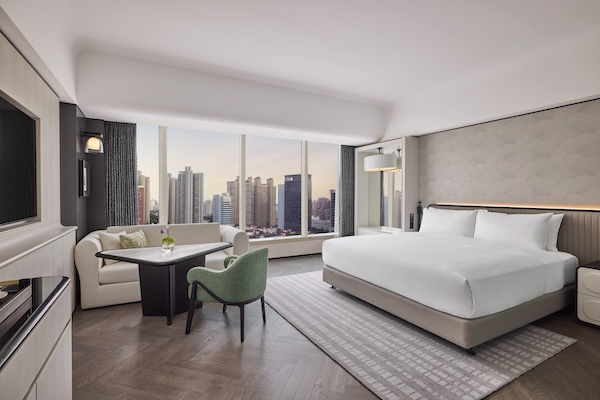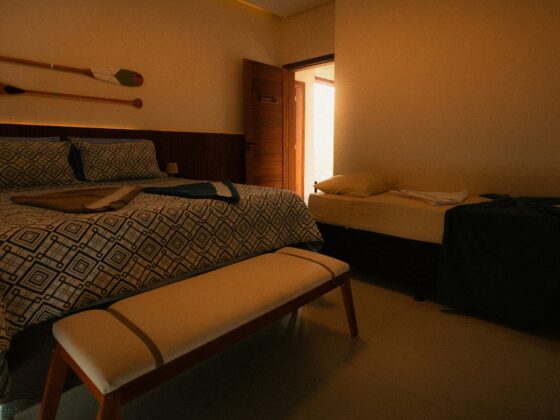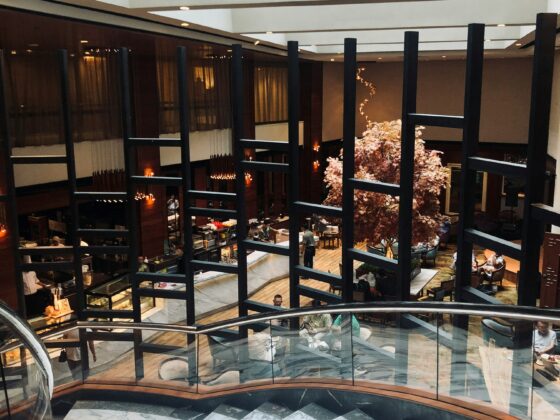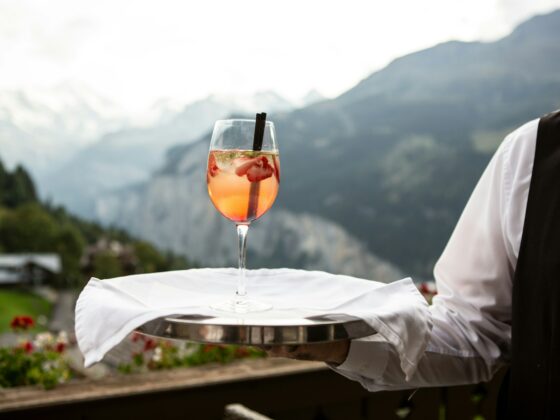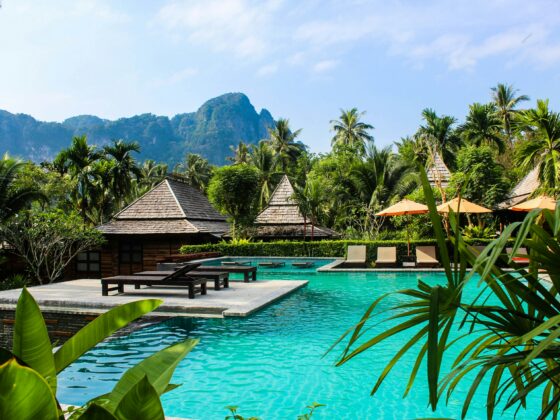Hilton added nearly 100,000 rooms in 2024 accounting for net unit growth of 7.3%. It was a record for the 105-year-old company. Can it match or exceed it in 2025?
On Thursday, Hilton held its first earnings call subsequent to the election of President Trump and a new Administration in Washington, D.C., and Chris Nassetta, president and CEO of Hilton, said that the change in leadership should result in a pickup in economic growth, after consumers, he said, “hugged their capital” prior to the election, the outcome of which he described as dispositive. “There is a broad belief across a range of industries that people think that the opportunity for economic growth in the short to intermediate term will be better,” he said, citing such things as a lighter regulatory environment and a tax policy more conducive to growth.
Net income for the fourth quarter was $505 million, while RevPAR increased 3.5% and 2.7%, for the fourth quarter and full year, respectively, compared to the same periods in 2023. Hilton added 22,600 rooms in the quarter for a record full-year total of 98,400 room openings across 973 hotels. Its development pipeline was 498,600 rooms as of December 31, 2024, representing YOY growth of 8%.
Nassetta highlighted some of Hilton’s international feats in the quarter, including opening its first Tapestry Collection hotels in Paraguay, Bonaire and Australia, adding to the conversion-friendly brand’s now 150 hotels in 20 countries. Hilton also debuted its Curio Collection brand in Romania and opened its first Hampton by Hilton hotel in Africa; its first Tru by Hilton in Colombia; its first Spark by Hilton in Austria. In November, Hilton signed a strategic licensing agreement with Olive by Embassy to open 150 Spark by Hilton hotels across India.
Luxury High
Hilton’s luxury and lifestyle pipeline mix is nearly two times its existing supply, “supporting continued growth in these important segments,” Nassetta said. Hilton has made a concerted push in the luxury and lifestyle segment, much like its competitors, through acquisition over organic brand building, the latter historically having been the company’s approach. Last year, it added some 400 luxury hotels to its network though a partnership with SLH. It also acquired a controlling stake in Sydell Group and, through it, the NoMad brand, along with Graduate Hotels from AJ Capital Partners. It will reopen Waldorf Astoria New York later this year. In all, Hilton is looking to double its presence in the lifestyle segment over the next four years.
There is much more competition for deals at the higher end of the chain scales, noted Kevin Jacobs, CFO and president of global development for Hilton, which, he said, precipitates a higher demand for key money: Hilton contributes key money on around 10% of all deals, Jacobs said. “We do play in some of those deals because they’re important, and they tend to be higher checks.”
Conversions accounted for roughly 45% of room openings in the year, as new-construction starts remain depressed in a still relatively high cost of capital climate. “It’s a difficult environment for new development,” Nassetta said, though opining that the money out there for new construction is attracted to Hilton brands. “We are getting a disproportionate share,” he said. “We’re more financeable with the money that’s available for new construction.” Conversely, he said, what he called the “best-performing brands” in the business also received a large disproportionate amount of conversion opportunities, which are closing in on 50% of all deals.

Costly Considerations
Nettlesome cost pressures continue to roil hotel owners even before the announced imposition, then, for the moment, pullback of U.S. tariffs on two of its biggest trading partners in Canada and Mexico. An unperturbed Nassetta delivered what can only be called his trademark stolid response, invoking what he calls his capacity to lift up above the noise. “What’s playing out is a series of trade negotiations that are delicate, and I believe tariffs are part of that negotiation and part of the strategy to getting to the right kinds of deals in the end,” he said. “That doesn’t mean there won’t be tariffs, but my guess is that we will end up in some form of trade deal that will not involve major tariffs.”
For its part, Hilton, Nassetta said, diversified its supply chains “in a very aggressive way over the last five years,” a reaction to COVID, but also other variables. “It’s a really good idea to have various places in the world where we can get various products,” he said, complimenting Hilton’s HSM team, which is responsible for global procurement efforts.
Still, owner P&Ls are bombarded by higher costs from labor to food. “There are some cost pressures and we’ll continue to work for our owners to try to find as many operational efficiencies as we can so that they can grow their bottom lines,” said Jacobs. “We are doing the best we can on wages and benefits, doing the best we can on insurance—just helping them with operating efficiencies across the board.”
One place that hasn’t escaped the tariff stick is China, where a lag in travel still exists for major lodging companies, though it is improving quarter by quarter. Development and new openings, meanwhile, are showing a steady march upward: Hilton’s approvals and starts in the country were both up 10% and openings were up nearly 30%. “The slowdown you’re seeing overall in real estate isn’t affecting lodging as much,” Nassetta said.
And though volunteering the unknown in China’s GDP growth this year, Nassetta remained sanguine on further development, especially in mid-market hotels, such as on the Hilton Garden Inn brand. “We feel pretty good about doing better on the fundamental side, and then we’re doing great on the development side,” he said.
Chinese outbound travel to the U.S. remains stunted, but that doesn’t mean the Chinese aren’t traveling. They are “traveling like crazy,” Nassetta said, pointing to inter-Asia visa-free zones that make it easier.
